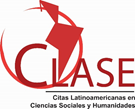Educational analysis of the impact of Hegel's thought on art with an approach to the romanticist movement in academic textbooks in the field of art
Resumen
The aim of this study is analyzing educational of the impact of Hegel’s thought on art with an approach to the romanticist movement in academic textbooks in the field of art. Hegel was one of the most important German idealist philosophers who presented a new understanding of (aesthetics) in (art). From Hegel's perspective, each work of art consists of two parts: 1- The (spiritual) meaning 2- The (physical) form aspect. For this reason, this adaptation itself rises the basic types of art. In fact, the basic character (Romantic Art) is already provided and the (spirit) transcends (matter) and becomes an independent being. In this research, we seek to find new modes of expanding the aesthetic in the realm (art) by approaching art in the period of (romanticism) and getting assistance from (aesthetically) Hegel's perspective. The result is that if we call the work (art) beautiful since its creator is the (spirit) human being, it can be far superior to nature's yield. Hence, in his aesthetics, Hegel also discusses beauty and natural beauty, as he thinks the worst of human contemplation result is superior to nature, because there is always (the spirit), freedom and presence of the artist. So, (beauty) only benefits from the source of the ultimate truth and testifies to it.
Keywords:
Aesthetics, art, spirit, physical beauty, Romantic Art.
RESUMEN
El objetivo de este estudio es analizar el impacto educativo del pensamiento de Hegel en el arte con un enfoque del movimiento romántico en los libros de texto académicos en el campo del arte. Hegel fue uno de los filósofos idealistas alemanes más importantes que presentó una nueva comprensión de (estética) en (arte). Desde la perspectiva de Hegel, cada obra de arte consta de dos partes: 1- El significado (espiritual) 2- El aspecto de la forma (física), por esta razón, esta adaptación en sí misma da lugar a los tipos básicos de arte. De hecho, el personaje básico (arte romántico) ya está provisto y el (espíritu) trasciende (materia) y se convierte en un ser independiente. En esta investigación, buscamos encontrar nuevos modos de expandir la estética en el ámbito (arte) al acercarnos al arte en el período de (romanticismo) y obtener ayuda desde la perspectiva (estéticamente) de Hegel. El resultado es que si llamamos a la obra (arte) bella ya que su creador es el ser humano (espíritu), puede ser muy superior al rendimiento de la naturaleza. Por lo tanto, en su estética, Hegel también discute la belleza y la belleza natural, ya que piensa que el peor resultado de la contemplación humana es superior a la naturaleza, porque siempre hay (el espíritu), la libertad y la presencia del artista. Entonces, (belleza) solo se beneficia de la fuente de la verdad última y lo atestigua.Palabras clave:
Estética, arte, espíritu, belleza, física, arte romántico.Descargas
Descargas
Publicado
Cómo citar
Número
Sección
Licencia
La editorial "Universo Sur", de la Universidad de Cienfuegos, publica el contenido de la Revista "Conrado" bajo una Licencia Creative Commons Atribución-NoComercial-SinDerivar 4.0 Internacional.
© Podrá reproducirse y socializarse, de forma parcial o total, el contenido de esta publicación, sin fines comerciales, siempre que se haga de forma literal y se mencione la fuente.







